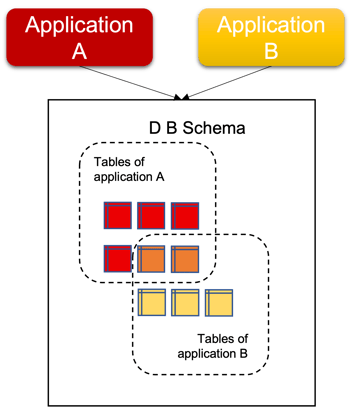
- By Codurance Insights
- ·
- Posted 07 Apr 2025
The CTO Playbook for Retail Transformation: Building for Agility, Data, and Customer Experience
In today’s retail environment, customer experience is the battleground—and technology is at the heart of it.

The House of Commons Public Accounts Committee has highlighted the pressure that legacy systems have placed on the government.
"Such systems are widespread across government, but can be unreliable, hard to support, and frustrate efforts to modernise services. This situation is not helped by the scarcity of specialist digital, data and technology skills…"1
Legacy systems can be defined as:
The UK point of view about legacy systems;
In addition;
The risks of procrastinating the modernisation of legacy systems range from loss of data, and outages to dramatic consequences (think of failures in critical sectors like hospitals or transportation - train routing system errors).
The company system modernisation and migration must be driven by a well-defined strategy, and the experience of a specialised partner is key to avoiding failure. Read more about modernisation strategy in our new eBook: Crafting a Cloud Migration and Modernisation Strategy for the Public Sector.
The key concept to keep in mind to embrace modernisation is that the process can be progressive, tackling one piece of the system at a time.
An example of legacy systems and modernisation: the high coupling problem created by having a shared database, and its solution
This article is not exhaustive on the migration process, but shows in a simplified way how a single common problem can be managed.
There is a big limitation that affects many IT legacy stacks in the public sector: sometimes systems are tightly coupled, and this article talks specifically about the problem and the solution of database schema-sharing.
The database schema is a logical partition created inside an RDBMS database server (single instance or cluster); the schema contains tables, constraints, stored procedures and everything related to the schema.
There is no problem in sharing an on-premise database server between two or more applications. The application data in this database server must be segregated in database schemas to be accessed using different database users.
This article focuses on database schema sharing and is not meant to evaluate when a database server should or should not be shared between different applications.
For the purpose of this article, the terms "database" and "schema" are synonyms of "RDBMS schema" from here on.
The easiest form of database sharing to think of, is the one in which two applications share the same schema: the applications have their tables in the same database schema, and some of these tables may be used by both applications. In this scenario, two applications use the same schema as their main one.
This picture shows the above scenario, with an overlap between the sets of applications’ tables:
There is another form of database sharing: legacy RDBMS were used as final endpoints for integration between two or more applications. In this scenario, application A has its main database and has a dependency on the data of application B; the data of application B are accessed by application A, not by specific services exposed by application B (e.g.: REST API, SOAP web services) but in one of these ways:![]()

Apart from database sharing, a more common anti-pattern is the store of business logic inside the database, the so-called “stored procedures”. Executing data operations as nearest as possible to the data could be useful, but there is the risk of lock-in: extracting business logic from the database frees the companies from this specific lock-in, allowing database switch (e.g.: from commercial to open-source), re-platforming (e.g.: from on-premise to a cloud offer) and refactoring (e.g.: from RDBMS to NoSQL).
Together with the stored procedures we can mention the database triggers, which call stored procedures consequently to an event. A write operation (insert/update/delete) on a schema could trigger a stored procedure that produces more changes than the ones on the records identified by the table and "where" clauses specified by the query.
A developer’s team can use a dblink to do a write operation on a database of another application, without caring about eventual triggers, creating entropy. These problems can be mitigated with specific user permission configurations at db level, but the best practice to apply is segregation: this leads to loosely coupled applications. Later in this article it will be shown how to get rid of dblinks.
Another possible drawback of sharing a database between two or more applications (directly or with dblinks) is the impossibility for an application to evolve, because the data model (tables and referential integrity statements like foreign keys) are shared with another application that maybe can't be modified for different reasons. If one application needs to evolve modifying the database schema and the other application can not be consequently updated, the evolution procedure is stuck.
It’s worth noting that a database shared between multiple applications will execute queries coming from all of these applications: if one of these queries bursts the CPU or locks some resources, then there will be consequences also for the other applications.
Applications can share the data in their database with database-sharing in a very simple way, but the price to pay is the high coupling: after years (or decades) of direct accesses and dblinks, it is difficult to update the schema to support new features, it is difficult to update the technology stack and is even harder to move the stack to the cloud.
In Part Two we will look at the steps required to decouple applications sharing a common database schema. In the meantime, why not download a copy of our new eBook which focuses on cloud migration and modernisation strategies in the Public Sector. Download your copy here.

In today’s retail environment, customer experience is the battleground—and technology is at the heart of it.

Many software teams face a common challenge: they inherit large, complex systems built long before they arrived. Over time, these systems accumulate..

When faced with the challenge of modernising legacy systems in businesses, we know the potential benefits are immense, but so are the challenges...
Join our newsletter for expert tips and inspirational case studies
Join our newsletter for expert tips and inspirational case studies